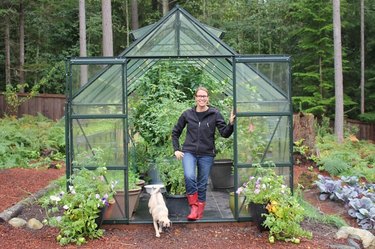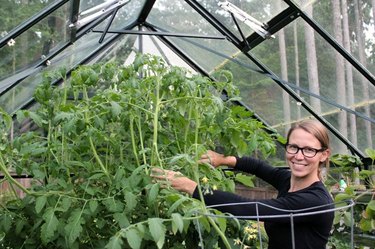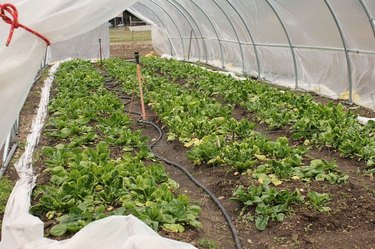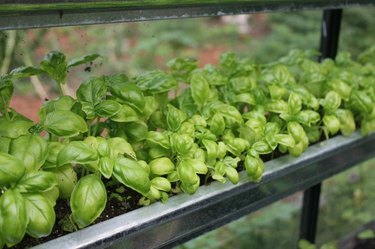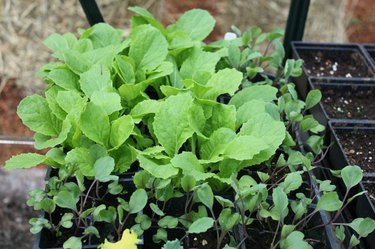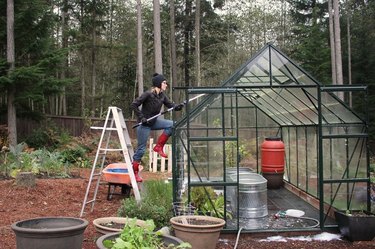If you've been contemplating purchasing or building a greenhouse to extend your gardening season, go for it. Growing plants in a greenhouse might seem a little intimidating at first, but it's pretty much the same as caring for plants outside. The difference is you'll need to water your plants on your own since you won't be able to depend on the rain like you would with a traditional garden. If you are worried about bees being able to get in to pollinate your plants, don't. They'll get in through the ceiling vents and doorways.
Tip
Sponsored tip: Need tools for your project? Check out RentalHQ and get connected with local businesses that’ll help you rent the equipment and tools you need.
Video of the Day
Choosing the Right Greenhouse
Greenhouses come in all shapes, sizes and prices, but ideally you'll want to buy the largest greenhouse you can afford. If you're a traditionalist and have the funds available you'll probably want to go the old fashioned glass greenhouse route for aesthetic reasons. If you don't live in a neighborhood with strict Homeowners Association restrictions, building an unheated plastic greenhouse is a great option for the DIY types and budget conscious crowd.
Video of the Day
Ideally, greenhouse temperatures should be around 80 degrees during the daytime and just above 50 degrees at night during the summer months. Ceiling and side vents can be used to help regulate greenhouse temperatures and keeping the vents open in the summer months will help with air circulation.
Growing Vegetables Year Round
If you plan on growing vegetables during the winter months you'll need to keep plants above freezing (40 - 45 degrees is ideal for varieties such as spinach, lettuce and carrots to thrive). The use of row covers or installing a small heater in a greenhouse will help keep plants above freezing temperatures and help with any humidity problems which may incur.
Go Crazy, There are No Rules!
One of the joys of owning a greenhouse is that you can do whatever you want, so get creative. Want to try growing herbs or lettuce greens in rain gutters? Go for it. Try growing citrus if it's something you're curious to try. The key with any hobby (especially gardening) is the joy that comes with trial and error. Most seed packets only cost a dollar or two, so experimenting on what to grow in your greenhouse is some seriously cheap entertainment.
Starting Seedlings in a Greenhouse
Getting a jump start on growing seedlings before the temperatures start to warm up outside is just one of the many benefits of owning a greenhouse.
Cold hardy seeds like cabbage, broccoli, Swiss chard and lettuce greens can be sowed during the late winter months for an early spring harvest. You can start tomatoes and peppers in early spring and once the weather warms up you'll be able to move them out to the garden. Not only will your plants be bigger and better than anything you could buy at the home improvement store, but they'll taste better, too, because they were grown with love.
Greenhouse Maintenance
The great thing about cleaning a greenhouse is there is no need for fancy chemicals. You'd be surprised how quickly tree pollen, algae and fungus can build up on both your interior and exterior window panes. Simply clean your greenhouse at least once or twice a year with a scrub brush and hot soapy water. Greenhouse cleaning time is also the perfect opportunity to clean out all your greenhouse pots and trays as well, especially if you plan on gardening during the winter months when you need to maximize the light shining into your greenhouse.
